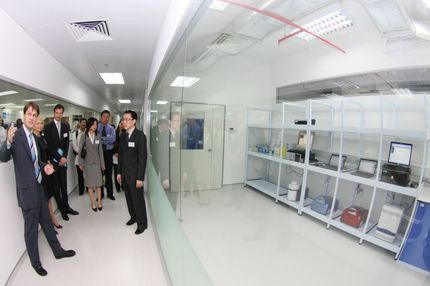Indian pharmaceutical industry goes from strength to strength
Indian government established tax concessions to promote innovative R&D
The Indian pharmaceutical industry is going from strength to strength in establishing itself across the world. That's the verdict of Chiltern International, a leading independent clinical research organisation which is carrying out a range of projects with international clients.
"The Indian pharmaceutical industry has made no secret of its desire to globalise and eventually compete with its counterparts in Europe, Japan and the USA," explained Chiltern's Dr Faiz Kermani. "But there is still a long way to go before it can truly regard itself as a major international force. Most of the Indian industry's current success has been achieved in the area of generics rather than innovative new drugs, and its multinational competitors have decades more experience in global drug development and much greater financial power."
Even so, the Indian pharmaceutical industry has capabilities in the complex field of drug manufacture, drug development and formulation technology. It is a highly organised sector estimated to be worth around $4.5 billion, and is growing at about 8 to 9 percent annually. Government incentives could be the key to further success.
"The industry has long campaigned for better incentives from the government to help its companies rival those elsewhere in the world, especially in the field of innovative R&D," added Dr Kermani.
The Indian government has now realised that it needs to respond if it is to boost its domestic industry and although it is taking a cautious approach, it has established tax concessions to promote innovative R&D, including a 10 year tax exemption period for R&D based activities and making all drugs and materials imported or exported for clinical trials exempt from Customs and Excise duties.
"Judging by total levels of R&D investment, there are clear signs that the R&D intensity of the Indian pharmaceutical industry is growing. The presence of low cost production facilities and a large science base in India will help drive this trend over time."
Although innovative R&D remains a long-term ambition, in the medium term there is likely to be enhanced generic activity from Indian companies. This is because a number of a high profile drugs have come off patent and this has opened up an opportunity for various Indian companies to develop generic versions for sale in the US and European markets. The long-term 'plus' of this is that it will help Indian companies gain more experience of operating in foreign markets and in dealing with regulatory agencies in these countries. It will also enable them to create opportunities to collaborate with foreign companies and CROs.
"Succeeding in innovative R&D will be a challenge though," explained Dr Kermani. "At present, the R&D to sales ratio for most Indian companies is only around 1.9% where in many US and European companies it is between 10% and 20%. What is entirely possible, however, is for a much more successful approach to innovative R&D to emerge from collaborations with foreign companies and CROs, who have the necessary experience in drug development."
Other news from the department business & finance

Get the life science industry in your inbox
By submitting this form you agree that LUMITOS AG will send you the newsletter(s) selected above by email. Your data will not be passed on to third parties. Your data will be stored and processed in accordance with our data protection regulations. LUMITOS may contact you by email for the purpose of advertising or market and opinion surveys. You can revoke your consent at any time without giving reasons to LUMITOS AG, Ernst-Augustin-Str. 2, 12489 Berlin, Germany or by e-mail at revoke@lumitos.com with effect for the future. In addition, each email contains a link to unsubscribe from the corresponding newsletter.























































